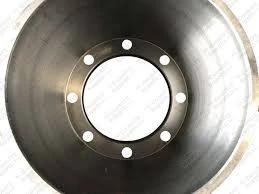
-
 Afrikaans
Afrikaans -
 Albanian
Albanian -
 Amharic
Amharic -
 Arabic
Arabic -
 Armenian
Armenian -
 Azerbaijani
Azerbaijani -
 Basque
Basque -
 Belarusian
Belarusian -
 Bengali
Bengali -
 Bosnian
Bosnian -
 Bulgarian
Bulgarian -
 Catalan
Catalan -
 Cebuano
Cebuano -
 Corsican
Corsican -
 Croatian
Croatian -
 Czech
Czech -
 Danish
Danish -
 Dutch
Dutch -
 English
English -
 Esperanto
Esperanto -
 Estonian
Estonian -
 Finnish
Finnish -
 French
French -
 Frisian
Frisian -
 Galician
Galician -
 Georgian
Georgian -
 German
German -
 Greek
Greek -
 Gujarati
Gujarati -
 Haitian Creole
Haitian Creole -
 hausa
hausa -
 hawaiian
hawaiian -
 Hebrew
Hebrew -
 Hindi
Hindi -
 Miao
Miao -
 Hungarian
Hungarian -
 Icelandic
Icelandic -
 igbo
igbo -
 Indonesian
Indonesian -
 irish
irish -
 Italian
Italian -
 Japanese
Japanese -
 Javanese
Javanese -
 Kannada
Kannada -
 kazakh
kazakh -
 Khmer
Khmer -
 Rwandese
Rwandese -
 Korean
Korean -
 Kurdish
Kurdish -
 Kyrgyz
Kyrgyz -
 Lao
Lao -
 Latin
Latin -
 Latvian
Latvian -
 Lithuanian
Lithuanian -
 Luxembourgish
Luxembourgish -
 Macedonian
Macedonian -
 Malgashi
Malgashi -
 Malay
Malay -
 Malayalam
Malayalam -
 Maltese
Maltese -
 Maori
Maori -
 Marathi
Marathi -
 Mongolian
Mongolian -
 Myanmar
Myanmar -
 Nepali
Nepali -
 Norwegian
Norwegian -
 Norwegian
Norwegian -
 Occitan
Occitan -
 Pashto
Pashto -
 Persian
Persian -
 Polish
Polish -
 Portuguese
Portuguese -
 Punjabi
Punjabi -
 Romanian
Romanian -
 Russian
Russian -
 Samoan
Samoan -
 Scottish Gaelic
Scottish Gaelic -
 Serbian
Serbian -
 Sesotho
Sesotho -
 Shona
Shona -
 Sindhi
Sindhi -
 Sinhala
Sinhala -
 Slovak
Slovak -
 Slovenian
Slovenian -
 Somali
Somali -
 Spanish
Spanish -
 Sundanese
Sundanese -
 Swahili
Swahili -
 Swedish
Swedish -
 Tagalog
Tagalog -
 Tajik
Tajik -
 Tamil
Tamil -
 Tatar
Tatar -
 Telugu
Telugu -
 Thai
Thai -
 Turkish
Turkish -
 Turkmen
Turkmen -
 Ukrainian
Ukrainian -
 Urdu
Urdu -
 Uighur
Uighur -
 Uzbek
Uzbek -
 Vietnamese
Vietnamese -
 Welsh
Welsh -
 Bantu
Bantu -
 Yiddish
Yiddish -
 Yoruba
Yoruba -
 Zulu
Zulu
Choosing the Right 12 Inch Brake Drums for Optimal Performance and Safety in Your Vehicle
Understanding 12-Inch Brake Drums Importance and Applications
Brake drums are a crucial component of a vehicle's braking system, serving as part of the mechanism that slows down or stops the vehicle. Among the various sizes available, 12-inch brake drums are particularly significant in both commercial and passenger vehicles. This article delves into what 12-inch brake drums are, their importance, applications, and considerations for maintenance and replacement.
What Are Brake Drums?
Brake drums are typically made from cast iron or aluminum and are an integral part of drum brake systems. When the driver presses the brake pedal, hydraulic pressure forces the brake shoes against the inside wall of the drum. This friction generates the necessary force to slow or stop the vehicle. The size of the drum directly influences the efficiency and effectiveness of the braking system.
The Significance of 12-Inch Brake Drums
12-inch brake drums refer to the diameter of the drum, which is approximately 30.48 centimeters. This size strikes a balance between performance and compatibility for a range of vehicles. The 12-inch size is generally used in heavy-duty vehicles such as light trucks and some larger passenger vehicles, where enhanced braking power is necessary due to the weight and dynamics of these vehicles.
One of the main advantages of using 12-inch brake drums is their enhanced heat dissipation capabilities. When brakes are applied, they generate heat, which can lead to brake fade—a reduction in braking efficiency due to overheating. Larger drums have a greater surface area, allowing for better heat management and prolonged brake performance, especially under heavy loads or during frequent stops.
Applications of 12-Inch Brake Drums
12-inch brake drums are prevalent in various applications, particularly in the automotive and transportation industries
. They are commonly found in12 inch brake drums

1. Light Trucks and Vans Many light-duty trucks and vans utilize 12-inch brake drums due to their capacity to handle higher weights and provide reliable stopping power, making them ideal for cargo transportation.
2. Passenger Vehicles Certain models of SUVs and larger cars also employ 12-inch brake drums, particularly those designed for utility and performance.
3. Trailer Systems Many trailers, especially those designed for heavy loads, utilize 12-inch brake drums as part of their braking systems. This ensures sufficient braking power while maintaining stability and control.
4. Heavy Equipment In construction and industrial machinery, equipment that requires stops from high speeds or under heavy loads often incorporates 12-inch brake drums for reliable performance.
Maintenance and Replacement Considerations
Maintaining brake drums is essential for ensuring vehicle safety and performance. Regular inspections should be conducted to check for signs of wear, scoring, or cracks. Signs that brake drums may need replacement include diminished braking performance, unusual noises during braking, or visible damage.
When replacing brake drums, it's critical to consider quality over cost. High-quality drums can withstand greater stress and temperature fluctuations, resulting in a longer lifespan and better reliability. Installation should ideally be performed by a qualified mechanic to ensure proper alignment and function with the rest of the braking system.
Conclusion
12-inch brake drums play a vital role in vehicle safety and performance. Their design allows for effective heat dissipation and enhanced braking power, making them suitable for a variety of applications. Regular maintenance and careful attention to quality during replacement are essential to ensure that the braking system remains efficient and safe. As vehicles continue to evolve, understanding the components like brake drums will aid vehicle owners and operators in making informed decisions about their transportation needs.
-
What Are Drum BrakesNewsJul.07,2025
-
Understanding Brake Drum MaterialNewsJul.07,2025
-
Semi-Trailer Brake Drum: A Key Component for Extreme Loads and Long-Distance TransportNewsJul.07,2025
-
Drum Brake Pads for SaleNewsJul.07,2025
-
Brake Drums for SaleNewsJul.07,2025
-
Brake Drum ManufacturerNewsJul.07,2025
-
Aluminum Brake Drums: The Future of High-Performance CarsNewsJul.07,2025
